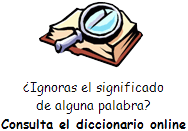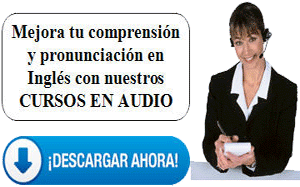Does Technology Belong in College
Classrooms?
Modern technology has a strong influence on many things we do.
In fact, technology is shaping almost every part of our day-to-day
existence, including education.
Ashok Goel is a professor with the School of Interactive Computing at
the Georgia Institute of Technology in Atlanta. Goel says he uses the
Internet in almost all of the classes he teaches. Every term over 300
graduate students take his class on artificial intelligence (AI).
The students never meet in person. All of the classes take place online
-- through a website. The site lets students ask questions and complete
their work from anywhere in the world.
Having hundreds of students in a class means Ashok Goel has to answer
thousands of questions. He has eight teaching assistants to help him.
But even that is not enough to give all the students the help they need.
So, in January, Goel had an idea. First, he noted that each term his
students were asking many of the same questions. Then he decided to try
an experiment.
At the start of the spring 2016 semester, he added a new member to his
teaching team: Jill Watson. She was able to answer questions faster than
most other teaching assistants. And she was available 24 hours a day.
It was only at the end of the semester that Goel’s students learned
Watson’s secret: she was not a real person like the other teaching
assistants. Jill Watson is an AI computer program.
Goel says only two students came close to predicting Watson’s true
identity. He was worried about telling his students because he thought
they would not like being part of the experiment. But once they learned
Watson’s identity, they became very excited.
"Then, you know what happened? They not only asked that question about
Jill. ‘Is she an AI?’ Once the identity of Jill was revealed they also
asked if I was an AI."
Goel now uses Watson in two other classes, but still does not tell his
students which of his teaching assistants is a computer program. He
hopes this technology will make it easier for teachers to create their
own programs to use in and outside the classroom.
And it appears stories like his will only become more common.
A website called Campus Technology publishes stories about how colleges
and universities use new technology. In August, the site published a
survey of over 500 professors and their use of technology.
Fifty-five percent of the professors said they ask students to use study
materials online before coming to class. And, more than 70 percent said
they combine online materials and face-to-face teaching in their
classrooms.
Ashok Goel says the new kinds of technology becoming available will
increase the availability of learning all over the world. But there are
some concerns about how well the technology works.
SRI International is a non-profit organization that researches many
different issues. In April, the group released the results of a survey
of educational technology at 14 colleges. The study measured the effect
of online classwork and special programs that measured student progress
and made suggestions about educational resources.
The study found that the technology did little to help student
performance.
Louise Yarnall is a senior research social scientist at SRI
International. She says there are two major problems. First, she says,
the technology has yet to reach a level that proves how useful it can
be. Second, there is no system to make sure the technology is used the
same way.
Yarnall notes that students and teachers all use the special programs in
different ways. This means they may not be using the technology as best
they can.
"Just like in school when teacher says, ‘Do your homework,’ we have
found that students who do their homework tend to do pretty well in
school and students who don’t do their homework often don’t do so well
in school. And the same idea applies here with adaptive learning. If you
don’t use it, you don’t progress."
Yarnall worries that once more technology enters classrooms, teachers
and students will be more concerned about the technology than anything
else.
Jose Bowen goes even further. Bowen is the president of Goucher College
in Baltimore, Maryland. He wrote a book arguing against the use of
technology in classrooms. It is called “Teaching Naked.”
Bowen admits that technology does improve the availability of
information. But he notes technology is not free. It still mostly goes
only to people that have money to pay for it.
Bowen also warns that giving students more information through the
internet or social media does not help them understand how to use that
information. He says the job of a college is to teach people how to
think critically and find their place in the world around them.
Technology can bring teachers to students all over the world, as in the
case of Ashok Goel’s class at Georgia Tech. But Bowen notes that online
classes do little for students with limited educational experience.
"So those tools are there. But the problem is that online content by
itself doesn’t know how to ask you the question ‘What interests you?
What motivates you?’ … The first thing a good swim teacher does is ask
you a couple of questions. The first question is, ‘How do you feel about
water?’ And if you don’t like water, then I change my lesson plan. … And
if you love water, well maybe I push you in the deep end."
He admits there is a place for technology outside the classroom. It can
do some things teachers cannot, like provide answers immediately when a
teacher is unavailable.
Bowen says teachers must accept the many things technology can do that
they cannot. But he and Goel agree that nothing can replace the personal
relationship between teachers and students. And the training in the
classrooms of today may be the only thing that prepares students for the
technology of tomorrow. |
![]() ).
Utiliza el botón derecho del ratón y "guardar enlace" para descargar el
fichero a tu PC, tablet, Smartphone, etc.
).
Utiliza el botón derecho del ratón y "guardar enlace" para descargar el
fichero a tu PC, tablet, Smartphone, etc.![]() Escucha el audio
Escucha el audio



